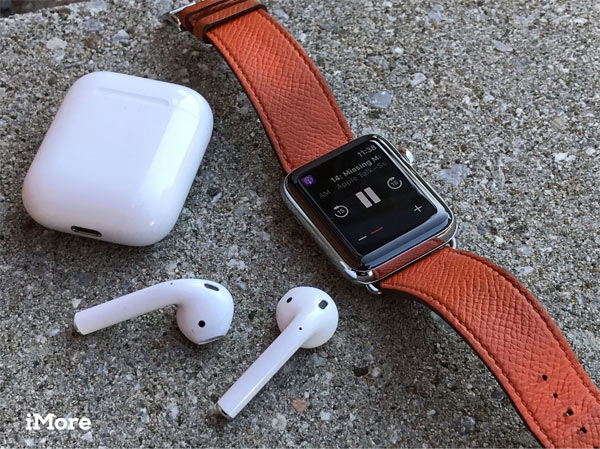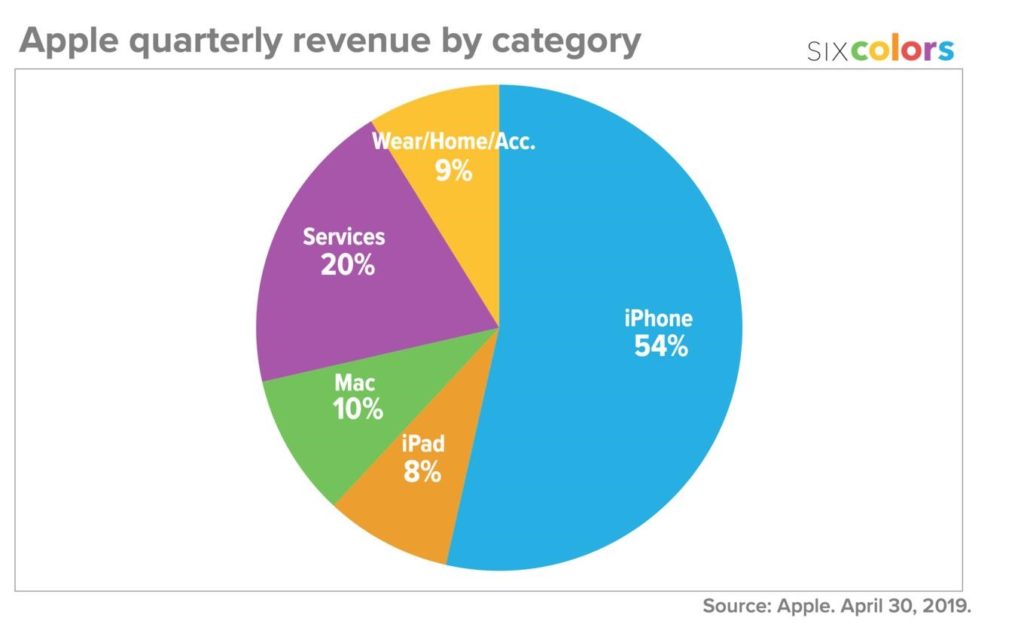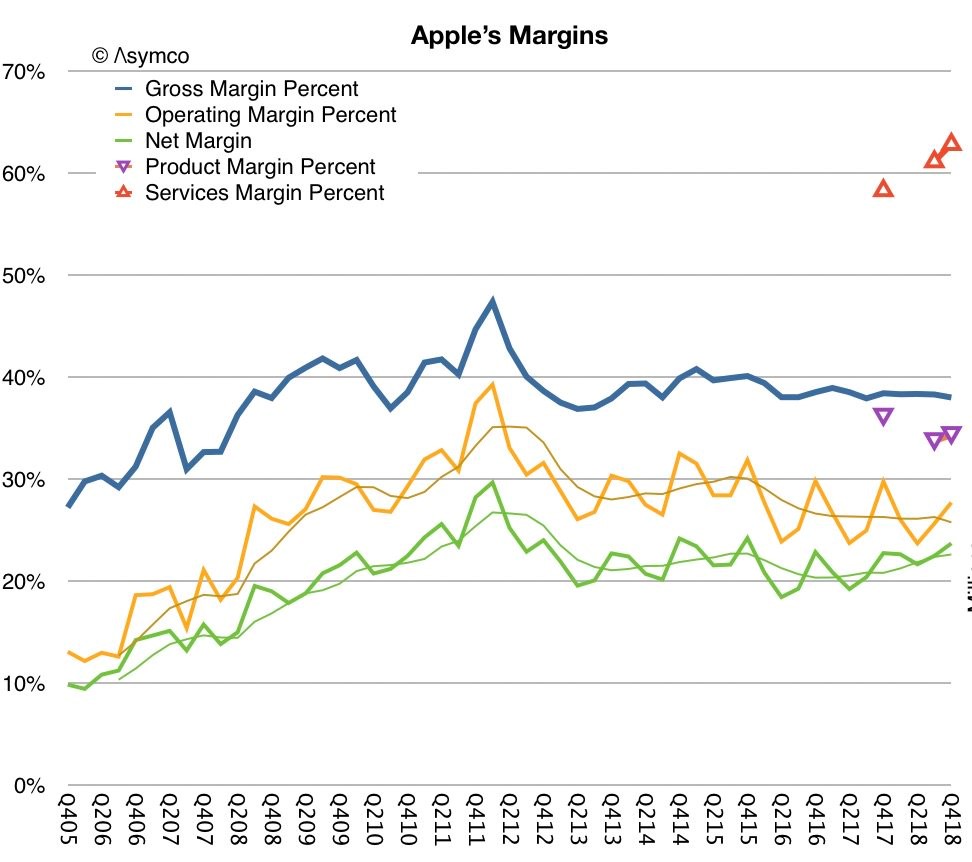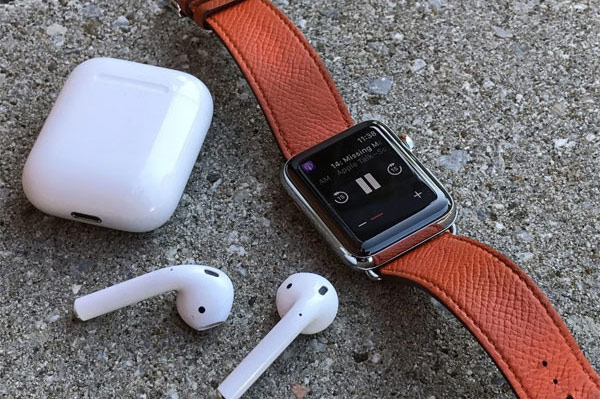Wearables & Services are the Future of Apple

Image Credit: iMore
Yesterday, Apple released its second-quarter earnings for its fiscal year and its earnings, along with comments from CEO Tim Cook, continue to confirm that the future growth of the company lies with its wearables and services. For today’s article, let’s take a look at the two, why they’re each uniquely important to the company, and how it ties into Siri.
Services = Profits

Image Credit: Six Colors
From a revenue perspective, the company’s cash cow is the iPhone. Apple brought in a total $58 billion in revenue and $31 billion of that total came from iPhone sales this quarter, representing 54% of the total revenue. Meanwhile, services brought in $11.5 billion, representing roughly 20% of the revenue.

Image Credit: Asymco
While the iPhone brings in more than 2.5x the revenue than services, the profit margins between the two are nearly the inverse. As the Asymco chart above shows, Apple’s hardware profit margins sit in the low 30% range, while the profit margins on services is around 63% and rising. So, even though the iPhone generates so much revenue for the company, only about $10.5 billion of that $31 billion falls to the bottom line (only, haha), while nearly $7.25 billion of the $11.5 from services is profit. This is why Apple is so adamant that it is transitioning to becoming a “services” company.
Wearables = Ecosystem Lock-In
Apple lumps AirPods, Apple Watch, HomePod, Beats, Apple TV, and iPhone accessories together when it reports earnings. This category represented $5 billion in revenue, up from $4 billion from the same quarter year-over-year, representing a 25% increase. However, Tim Cook said during the earnings calls that the wearables products inside this bundled category actually grew 50% and that Apple Watch, AirPods and Beats would be a Fortune 200 Company if the three were a standalone company. To put that in perspective, the Fortune 200 cutoff is $14.6 billion in annual revenue. Not too shabby for a suite of products that does not consist of a product more than 5 years old.
While services provide a profit hub for the company, wearables provide future product growth. It also does another thing for Apple – it increases the lock-in for the iPhone and the Apple ecosystem. Considering that you can only pair an Apple Watch with an iPhone, it’s assumed that nearly all Apple Watch owners are iPhone users. You can use AirPods with an Android phone, but the experience is lessened because the W1 and now H1 chips were designed in-house by Apple, to work most optimally by Apple. The same goes for Beats.
Three quarters of Apple Watch sales are going to first-time users.
— Horace Dediu (@asymco) April 30, 2019
So, as iPhone owners start to accessorize their phones with Apple Watches, AirPods and Beats, that means that they’d have to forego the accessories too, or at least the experience with their accessories if they’re considering switching to an Android phone. As you can see from the tweet above, 75% of the Apple Watch sales in Q2 went to new users, which ultimately represents a growing group of people that will be increasingly hard to “un-tether” from the Apple ecosystem.
The Siri Opportunity
The voice technology community would be the first to point out Apple’s lack of attention toward Siri and its nearly non-existent Siri developer ecosystem, which pales in comparison to Alexa or Google Assistant. That being said, it’s worth pointing out that Apple is probably the one company that can afford to be late to the smart assistant frenzy. For one, it announced in its earnings that it has $225.4 billion cash on hand. If Apple wanted to, it could buy its way back into relevance simply through acquisitions.
More importantly, however, Apple’s wearable lock-in effect gives Apple more runway to bring Siri up to parity with its smart assistant rivals. This buys Apple time as it helps to counter the potential that someone might switch to Android, as the probability is increasing that said person would own Apple wearables too. In addition, Apple Watch, AirPods and Beats provide a growing number of wrists and ears for Siri to reside in. If Apple were to ever get Siri right, it would already have the user base to push Siri out to. We shall see if this is something that Apple actually pursues or if it will continue to neglect its smart assistant and the third-party ecosystem needed to build it.
Follow @Oaktree_Dave Follow @voicebotai









